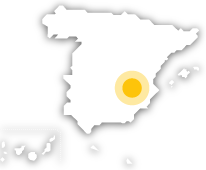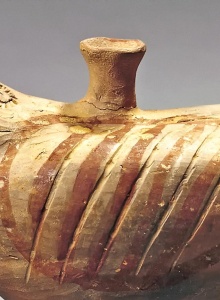The largest city in Castilla-La Mancha is situated on a vast, flat stretch of farmland of great natural value. This peculiar orography gave the region its old Arab name: Al-Basit (the Plain).
A journey through the region will allow you to perceive the intense commercial activity along its main arteries and the piece and quiet of its corners, so typical of La Mancha, awakened by the bustle that September brings, with its holidays and festivities that make this month the ideal time of year for a visit.
Lovers of the arts and customs of La Mancha will enjoy a modern city that has preserved all of its traditional flavour. The cathedral of Saint John the Baptist is located in the oldest part of the city's perfect urban layout. Although it is a Gothic building, its architecture includes different styles. The immense amount of time it took to build (four hundred years), yielded as a result a Gothic chapel, four great Renaissance columns, several Baroque elementsand a Neogothic main front. Albacete's religious architecture can also be seen in the old monastery of Encarnación (16th century), presently an arts centreand in the church of the Holy Conception.
Homes of La Mancha
Your journey will also take you to the Posada del Rosario (Rosario Lodging House), presently the Tourist Office, where you can admire the results of the mix of Gothic, Mudejarand Renaissance styles of construction. This compound has been declared a National Historic-Artistic Monument, since it is a good example of this purely Castilian type of accommodation that formerly thrived in the whole region of La Mancha.
Tejares street holds some of Albacete's most traditional homes, characterised by the layout of the rooms around a central courtyard. Casa de los Picos and Casona Perona both have coats of arms on their façades, indicating the noble lineage of the original owners. Albacete's Tourist Inn, located in a La-Mancha-style country house, is a very tempting choice to spend the night. Its restaurant has an excellent selection of regional dishes, such as gazpacho manchego (a soup with fried tomatoes, garlicand special crackers), soused partridge and Miguelitos de la Roda for dessert.
The financial prosperity that this area experienced at the beginning of the 20th century can be perceived in the Lodares Passage. Shopping malls with iron and glass roofs, separated by Renaissance columns, transport visitors to the best of the Modernist spirit.
You must not leave the city without first taking a walk under the shade of the trees at Abelardo Sánchez Park and paying a visit to the Albacete Museum. It has exceptional collections of Archaeology, Fine Artsand Ethnology. If, on the other hand, you would like to watch a game of bochas (bowls), similar to pétanque, you are sure to find some locals playing at the Fiesta del Árbol Park.
The Gastronomy of Albacete
You should definitely go shopping in the area around Ancha street. Shopping centres, as well as shops devoted to popular crafts (cutlery, knives and swords in particular) are located around here.
Plaza de Altozano, one of the city's forums, is a great place to start visiting the bars and sampling some snails, or any pork products, like the orza pork loins or some slices of streaky bacon. All these delicacies are usually served during the September festivities that honour the Virgen de los Llanos (Virgin of the Plains), patron saint of Albacete, of National Tourist Interest.
Albacete is also a great starting point for outdoor excursions to Montes de Chinchilla, Lagunas de Ruidera Nature Reserve and Sierra de Alcaraz, where the source of the river Mundo awaits. The Jucar Valley unfolds in the northern area of the province, where many traditional towns of La Mancha have settled among oak groves and farm land. To the east are the Montiel Fields, while one of the most important archaeological sites in Castilla-La Mancha, Tolmo de Minateda, is located to the southeast, in the Field of Hellín y Tobarra. To conclude, the monumental towns of Chinchilla and Almansa.








